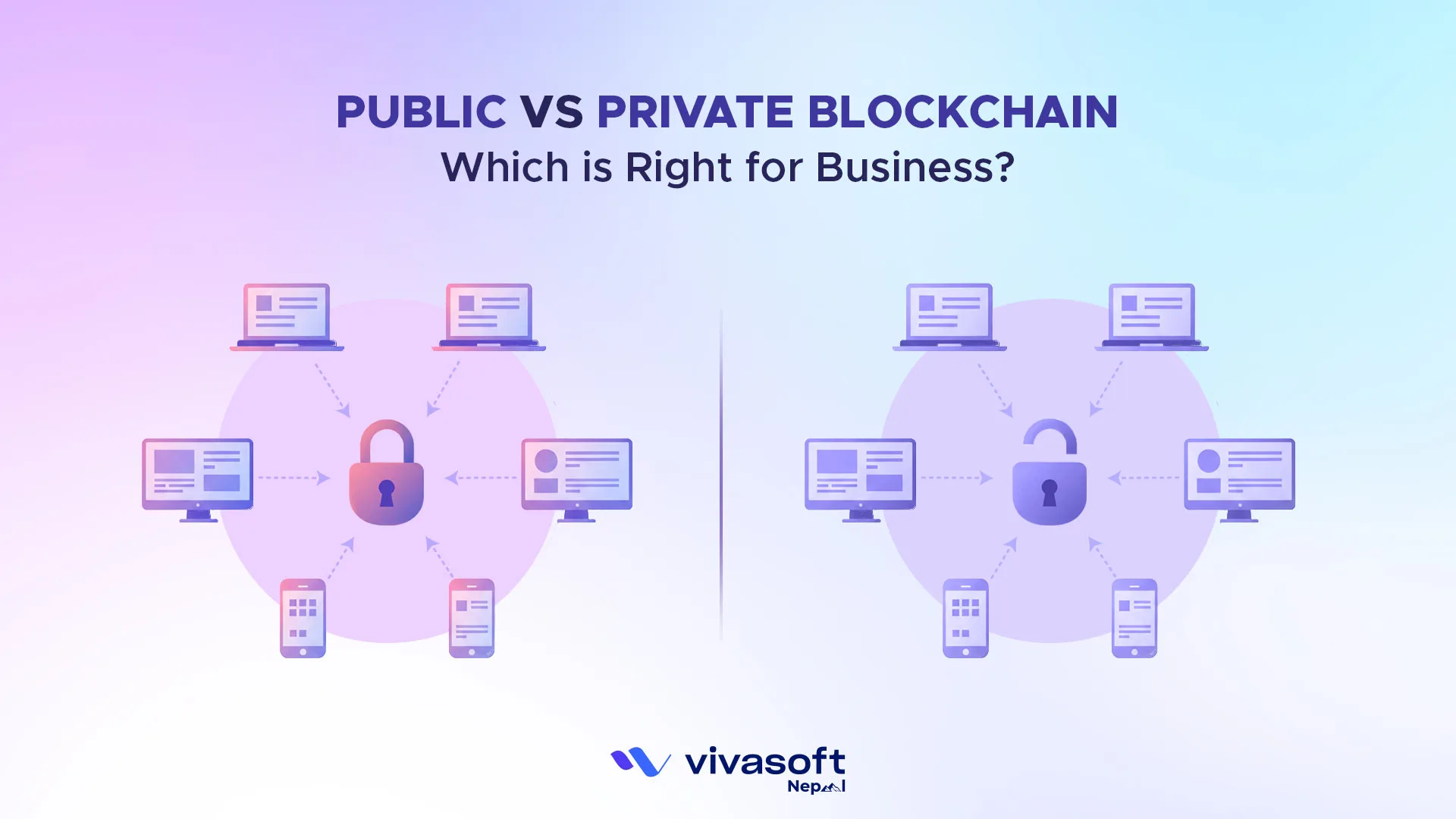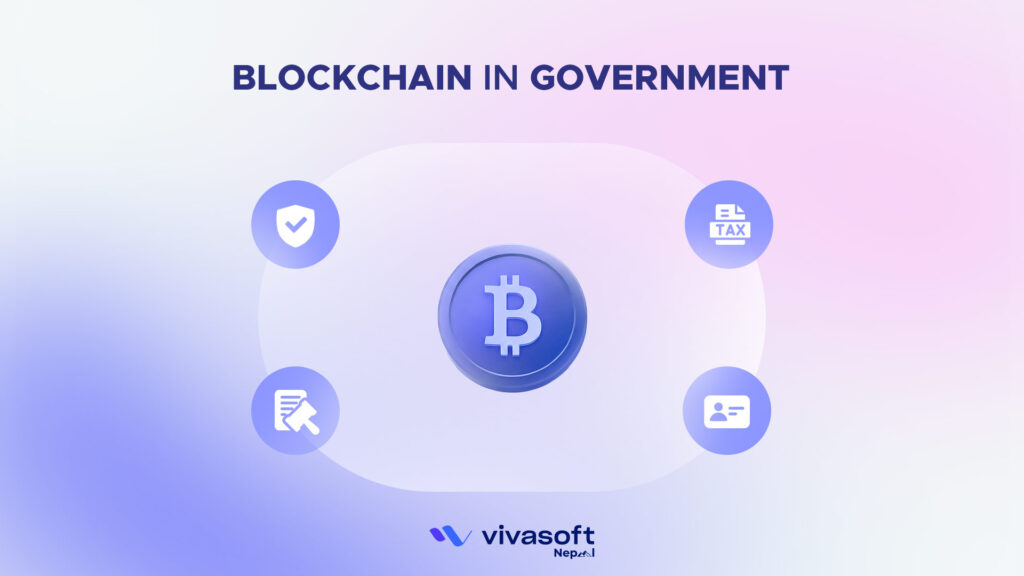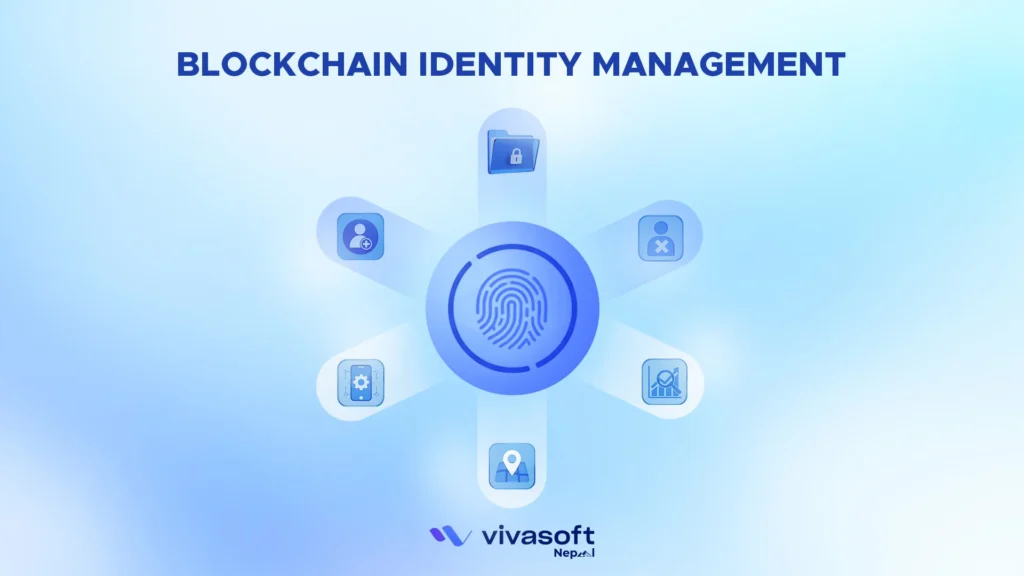Blockchain technology has completely transformed the way businesses and individuals handle digital transactions and share the needed transformation. As with a growing user base, there arise crucial decisions for businesses, and they have to select between public and private blockchains.
As the name suggests, public blockchains operate as open and decentralized networks where there is no restriction on participation. Private blockchains function as restricted environments with controlled access. The key differences lie in accessibility and control.
It is important to have a proficient knowledge of how these two different blockchain platforms differ if you want to build a secure and efficient system that matches your exact business goals. Choosing the wrong type can affect your security and slow down operations.
What Is a Public Blockchain?
Public blockchain is the decentralized ledger that is mainly an open and permissionless network, where anyone can join without authorization. Here, each node maintains a full copy of the blockchain and validates transactions through consensus algorithms. You can broadcast transactions directly to the network without any central authority interference.
Bitcoin is a prime example of a public blockchain. You can download its software, view its entire transaction history, and start mining blocks immediately. Ethereum also functions as a public blockchain that uses Proof of Stake consensus for validation.
Advantages of Public Blockchain
Public blockchains offer enterprises enhanced transparency, decentralized access, where any interested individual can participate in viewing and validating public records:
Decentralization
Decentralized facilities in the public blockchain network diminish the central governance and allow validations across thousands of permissionless nodes. Due to no intermediaries, there is no chance of censorship or single points of failure. This makes transactions more secure.
Transparency
All the transaction data on the network is openly recorded on a shared ledger accessible by anyone. Each block holds a cryptographic hash and a digital signature that are publicly viewable, and you can access them.
Security
Public blockchain mainly uses cryptographic algorithms and distributed consensus that help protect data. As each transaction is verified through multiple nodes, it is nearly impossible to alter or fake records.
Accessibility
To join the network, you only need internet access and a compatible wallet. It creates a peer-to-peer networking system where you won’t need any approval to start transactions.
Immutability
Each block has a hash of the previous block, which creates links together and forms a chain. After validation, no one can change unless you are re-validating the entire blockchain. A change in one block breaks this chain and exposes tampering.
Innovation Platform
The platform is likely an open innovation platform where developers worldwide can build dApps without any permission needed or licensing. They can access smart contracts, tokenization, and the required programmable keys and start the development process.
Limitations of Public Blockchain
Though it facilitates the decentralized system, the network has notable trade-offs. You may face real constraints that impact performance and cost.
- Scalability Issues: As the networks grow, the blockchains struggle to scale and slow down transaction throughput. As every transaction must be verified by all nodes, it can’t process data at the same speed, needs more storage and bandwidth, and causes rising volatile fees.
- Governance Challenges: Public blockchains face notable conflicts among diverse stakeholders in making any decision. This can lead to slow decision-making processes and even network splits. It often fragments the community.
- High Energy Consumption: Many public blockchains, particularly those using PoW, require a large amount of computational power for mining and validating transactions. Bitcoin mining alone needs over 150 terawatt-hours annually. Surprisingly, it is similar to the entire country of Argentina. This causes higher energy costs and eventually increases when the network grows.
- Privacy Concerns: Though public blockchains are transparent, privacy is a rising concern among users. As anyone can join the network, it often increases the security risks and becomes a prime target for attacks like 51% attacks. Hackers can take advantage of flaws or bugs in the blockchain’s code. This may let them have temporary control over the network’s computing power.
- Regulatory Uncertainty: Public blockchains operate in a global environment. Different countries have varying laws, which create compliance challenges for the participants. Any sudden changes or restrictions can affect blockchain functionalities.
- Complexity: Public blockchains are technically complex systems. You need to be technically enhanced to understand the cryptographic protocols and all underlying mechanisms. This technical difficulty makes it harder for beginners to get involved with the technology.
What Is a Private Blockchain?
A private blockchain is mainly a permissioned network that is controlled by a single organization or a consortium. Only authorized nodes can validate transactions and approve access for the ledger. It runs through some specific mechanisms named Practical Byzantine Fault Tolerance or Raft.
In this process, only the trusted and permitted entities can execute smart contracts. Private blockchains are highly customizable networks, where organizations can define their own governance model and privacy standards.
This type of blockchain is mainly used in enterprise solutions where it is critical to maintain the integrity and security of the transactions. For example, platforms like Hyperledger Fabric and R3 Corda are based on private blockchain frameworks.
Advantages of Private Blockchain
Private blockchains offer enhanced privacy and efficiency, making them ideal for businesses to need high-performance blockchain solutions.
Enhanced Privacy
Only authorized participants can view or modify records. It offers automated security of the overall sensitive data. Consensus mechanisms are designed to set who can validate transactions. Data encryption and zero-knowledge proofs secure the transactions, ensuring only permitted participants can access information.
Scalability
With controlled access, the network validates the transactions more efficiently and reduces the latency. The special consensus models handle higher transaction volumes. Some of the off-chain methods, such as Layer-2 techniques, are also utilized here to handle transactions without overloading the main blockchain layers.
Greater Control
Private blockchains offer organizations comprehensive governance and administrative authority over their network. They set their own rules to access and validate the transactions. For any security issue or a business need, private blockchain allows them in quick decision making and maintain compliance.
Improved Efficiency
As fewer nodes can access the consensus, it is simply faster to process the transactions with even less computational overhead. The best part, some of the specialized off-chain processes handle extra workload, and only relevant data is processed. It saves your time and resources as well.
Reduced Energy Consumption
Private blockchain networks don’t require a large amount of energy consumption to validate the data and process the transactions. As there are fewer trusted validators and more energy-efficient consensus mechanisms, they require less computational power and resources in the workflows.
Regulatory Compliance
Organizations in the networks must follow strict regulations as they need to allow controlled access and traceable transactions. Only authorized participants see sensitive information and help comply with the privacy laws. Smart contracts automate policy enforcement and reporting and reduce the chances of manual errors.
Limitations of Private Blockchain
Though it improves security, private blockchains are limited in some specific concerns. And they are:
- Centralization: A single entity or a small group controls the private networks. This central authority has the power to determine who can join and validate the transaction.
- Limited Transparency: A private blockchain restricts visibility to only authorized access. Any external users cannot independently verify the integrity of the network.
- Interoperability Issue: Each private network uses its own consensus mechanism and data format. Thus, no one in the network can integrate with other blockchains or legacy systems.
- Higher Maintenance Costs: Private networks require dedicated hardware and ongoing server maintenance. This adds recurring costs to the overall budget. Customization and upgrades also increase costs as the network grows.
- Trust Dependency: Participants in the network must have to trust what the central authority takes the decision for any access and validation. This centralization can create vulnerabilities if any malicious or fraudulent activity arises.
- Potential Security Risks: The centralized nature of private blockchains makes them more vulnerable to a single point of failure. Weak nodes could allow unauthorized access and compromise the system’s integrity.
To understand the process of building one safely, check out how to create a private blockchain.
Key Differences Between Public vs Private Blockchains
Private blockchains come with a number of advantages for businesses. Let’s take a look at some of the key advantages they provide.
| Aspect | Public Blockchain | Private Blockchain | Why it matters |
|---|---|---|---|
| Governance | Decentralized and participants collectively make decisions. | Controlled by one organization or consortium. | Ensures efficient updates and compliance. |
| Access to write (validate) | Permissionless, anyone can validate transactions. | Restricted, only trusted participants can write. | Limits validation for faster processing and control. |
| Consensus | Uses PoW or PoS mechanisms. | Uses PBFT or PoA mechanisms. | Ensures transaction validity and blockchain integrity. |
| Latency | Higher latency and probabilistic finality. | Lower latency and offer near-immediate finality. | Essential for fast transaction finalization. |
| Security model | Distributed network, strong incentives needed. | Security is mainly from strong access controls and organizational processes. | Protects data and prevents attacks. |
| Privacy | Fully transparent transactions. | Data and transactions are only visible to permitted parties | Privacy is essential for regulated or sensitive data. Higher transparency boosts trust. |
| Compliance | Maintaining centralized rules is challenging. | Strict and customizable regulations. | Ensures legal compliance in. |
| Smart contracts | Anyone can deploy contracts. | Contracts are governed and reviewed by admins. | Greater control lowers the risk of bugs or fraud in private blockchains. |
| Data immutability | Data is immutable once recorded. | Can be adjusted by governance rules. | Immutability secures audit trails. |
| Auditability | Fully auditable and offers transparent records. | Auditable only by authorized participants. | Public blockchains provide full transparency. Private blockchains control audit access. |
Which Blockchain Is Right for Your Business?
The right blockchain type depends on your project goals and data privacy needs.
Choose a public blockchain if:
- Your application needs large and global participation, where transparency is a must.
- You need transactions visible to all and to improve community trust.
- Decentralization is important, and you don’t require any single organization to control updates or access.
- Your project involves public tokens or cryptocurrencies with worldwide access.
Choose a private blockchain if:
- You are highly concerned about protecting your business-sensitive data.
- Faster transaction speeds and reduced costs are essential for your workflows.
- You need to comply with strict regulations or privacy standards to ensure data privacy.
- Your business requires the best control and centralized governance over the network.
Collaboration in your business is limited to trusted partners, who only validate transactions and update the system. All in all, the overall choice between public and private blockchains comes down to your business needs for transparency and control.
If you’re still confused about which direction to take, it is best if you can collaborate with a reliable blockchain development company. They can help you choose the right approach for your business
Wrapping Up
Public and private blockchains serve different purposes in the digital ecosystem. Public blockchains thrive in creating trustless, transparent systems. This is where you don’t need to worry about a single entity, and it is perfect for cryptocurrencies and open applications. On the other hand, private blockchains offer businesses improved immutability, security. The added privacy and efficiency it offers is a must-have mantra for enterprise operations.
If you want to build a blockchain solution perfectly for your business, contact Vivasoft Nepal. We help businesses design and deploy private blockchain networks that help you address real-world challenges. Our expert team will work closely with you to understand your operational challenges and make plans to help you grow at scale.
FAQs
What is a hybrid blockchain, and how does it differ from public and private blockchains?
Hybrid blockchain is a mix of public and private life. Some data is open to everyone like the public, and some are restricted to certain parties like private. It gives transparency where needed and privacy where required.
Are private blockchains faster than public blockchains?
Yes, usually private blockchains are faster because they have fewer nodes, less complex consensus, and no need to handle millions of random users.
Which blockchain type is more secure?
Public blockchains are generally more secure since they’re highly decentralized, making them harder to attack. Private ones are secure too, but they rely on trusting known participants.
How do public and private blockchains compare in terms of interoperability with other systems?
Public blockchains are more open and easier to integrate with other platforms while private blockchains are more closed and often work in silos. The best can be combined with hybrid blockchains.
Can private blockchains achieve true decentralization within a consortium model?
No, private blockchains in a consortium can’t be truly decentralized like public blockchains such as Bitcoin or Ethereum. Control is still limited to a few members.













